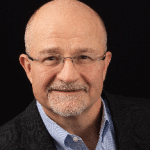When Google Health was launched, a few weeks ago, all the onus was put on the privacy issue. So much so that we may have lost focus on other issues that are of real importance to the future of e-Patients (that means you and me and everybody else you know!).
For example, I have been looking at the work of CCHIT (Certification Commission for Healthcare Information Technology), an important Recognized Certification Body (RCB) for electronic health records and their networks. CCHIT is a non-profit organization and an independent, voluntary, private-sector initiative. Its mission is “to accelerate the adoption of health information technology by creating an efficient, credible and sustainable certification program”. It relates DIRECTLY to all the discussions that are taking place about GoogleHealth and other commercial online providers of PHRs, since online PHRs will have to be certified for privacy, security, compliance, interoperability, importing and exporting of data by end-users, among others.
This week CCHIT announced the creation of a special PHR Advisory Task Force and of an associated workgroup on PHR. Both are populated with representatives of
- very large corporations,
- the online PHRs,
- EHR companies,
- other software companies,
- hospitals and health systems,
- payors,
- pharmaceutical companies,
- medical associations and
- PHR experts.
There is nothing wrong with the individuals that have all volunteered to be members of these 2 groups. Many of them are, in fact, dedicated proponents of patient empowerment, including at least one of the co-chairpersons. The other co-chairperson of the workgroup works at GHR, a company who has implemented a VOLUNTARILY HIPAA compliant PHR, unlike Google Health who could obviously have decided to do the same!
But the fact remain: there is NOT A SINGLE e-Patient representative on either group! How does CCHIT expect the public to embrace the use of PHRs if all the decisions about these PHRs appear to be made in rarefied silos, notable for their complete absence of direct patient representatives, just like in the Ol’Times (ie prior to the internet-mediated paradigm shift) when every “improvement” of the healthcare system was designed without any direct and equal input from the patient side. Every other industry has embraced the wisdom of the connected crowds.
To guarantee the success of PHRs, it is important that the early adopters set the example of patient control. It is now our responsibility, as early promoters of the new paradigm of participatory medicine & healthcare, to proactively offer help to CCHIT to become more patient oriented, to experience first-hand the value of bringing at the table the unfiltered voice of the e-Patient and of direct representation of the lay stakeholders. We can certainly help CCHIT hear the combined voices of the millions of users of medical online communities and Health 2.0 services.
Close to a generation ago, in 1992, the US military started its very successful DoD Breast Cancer Research Program, where an integration panel made up of scientists, breast cancer survivors and other experts regularly meets to determine where the gaps are in research about breast cancer. The program was so successful that it is now a set of medical research programs. If the DoD could initially integrate patients in such a program in 1992 we can obviously help CCHIT in doing the same in 2008?
The e-Patient movement and most of the patient empowerment Health 2.0 resources were born out of necessity, by patients and caregivers, not by professional healthcare providers. We have a unique opportunity with the PHRs to build back a strong bridge between this parallel world of e-patients (equipped, enabled, empowered, engaged, equals, emancipated and experts) and the healthcare system at large. Let’s all work cooperatively on implementing the best tools for the patients.
There are enough very smart innovators (some interviewed by Susannah Fox on this site) that have created remarkable patient-centric, online systems over the last 15 years. It should be very easy to find, among them, a great group of e-Patients representatives to the CCHIT PHR groups. I am sure that some members of the group managing this blog would volunteer. Furthermore if you need help in finding other innovators you can start with “Appendix A: Portraits of Social Media Health Pioneers (p 21)” of Jane Sarasohn-Kahn’s The Wisdom of Patients: Health Care Meets Online Social Media, published in April 2008. You can also find e-Patients that have COMPLETELY volunteered their time for more than 10 years to help countless others and have a deep understanding of what the connected patients are looking for, by managing the conversations, not the technology.






Trackbacks/Pingbacks